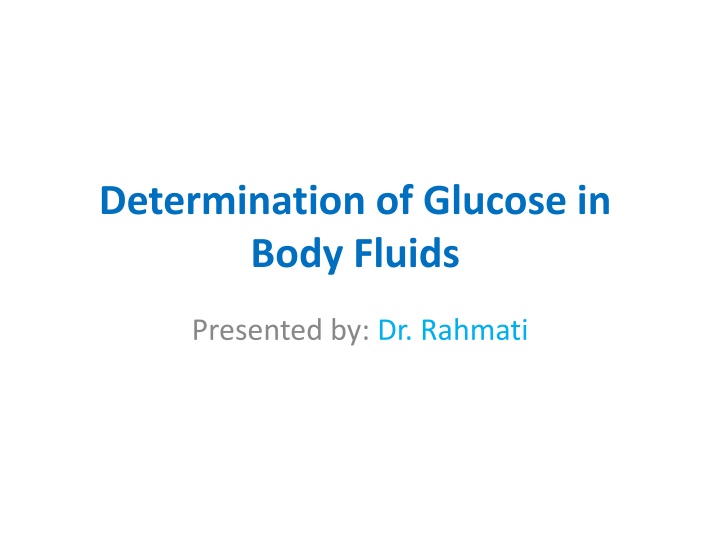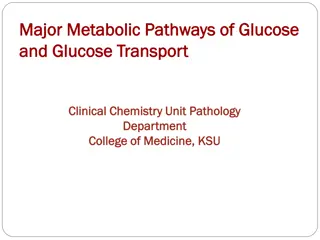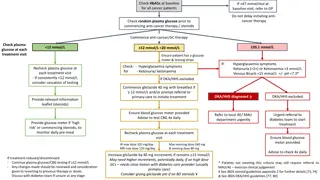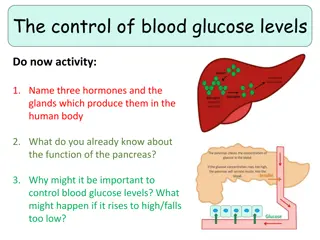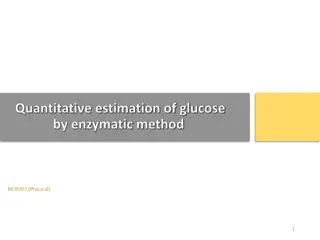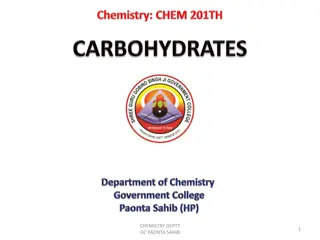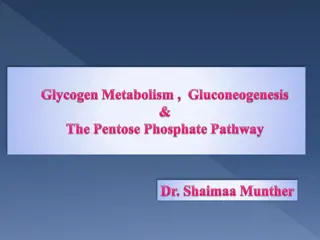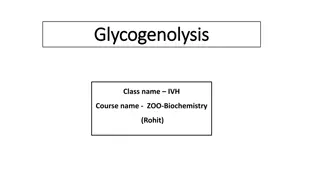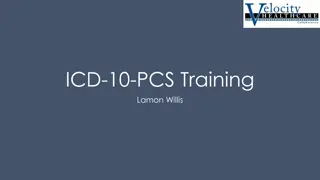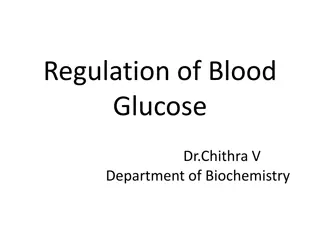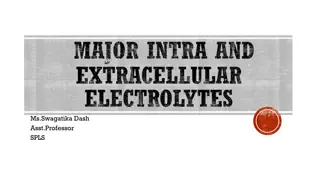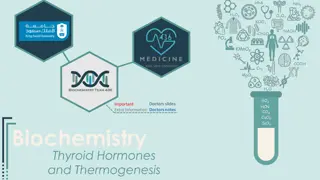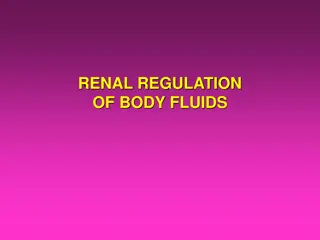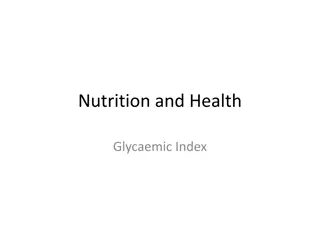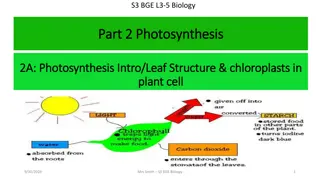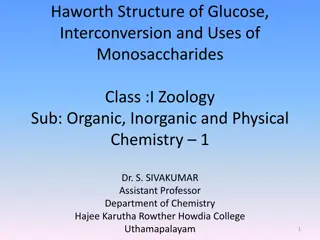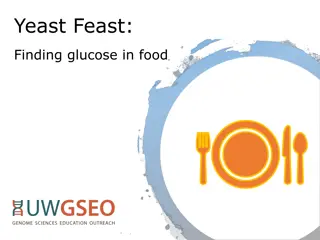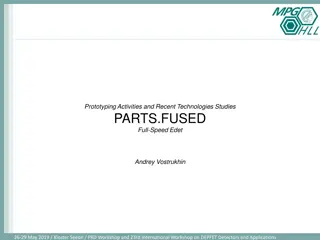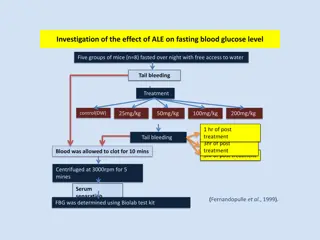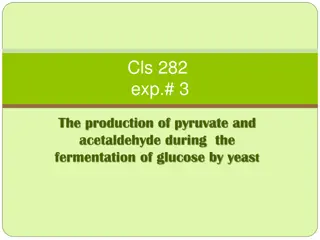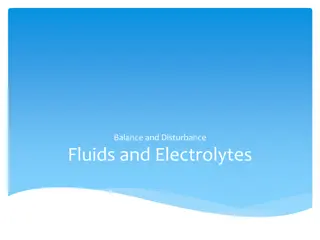Determination of Glucose in Body Fluids by Dr. Rahmati
Carbohydrates, especially glucose, play a vital role in energy production within the body. This presentation covers the significance of measuring glucose levels, fasting blood sampling procedures, and various methods such as chemical and enzymatic methods for accurate determination. Specific chemical methods like Oxidation-Reduction, Somogyi-Nelson, Folin-Wu, and Orto-Toluidine are discussed in detail. The presentation also highlights potential false positives from substrates with similar absorbance wavelengths to glucose.
Download Presentation

Please find below an Image/Link to download the presentation.
The content on the website is provided AS IS for your information and personal use only. It may not be sold, licensed, or shared on other websites without obtaining consent from the author.If you encounter any issues during the download, it is possible that the publisher has removed the file from their server.
You are allowed to download the files provided on this website for personal or commercial use, subject to the condition that they are used lawfully. All files are the property of their respective owners.
The content on the website is provided AS IS for your information and personal use only. It may not be sold, licensed, or shared on other websites without obtaining consent from the author.
E N D
Presentation Transcript
Determination of Glucose in Body Fluids Presented by: Dr. Rahmati
Introduction Carbohydrates are one of the most important organic component in body. Make 50-70% of energy Glucose is the major carbohydrate in our body. Its plasma level controls by some hormones: Insulin: Decreasing agent (Diabetes Mellitus) Glucagon, epinephrine, ACTH, Growth hormone (GH), thyroxin (T4), cortisol, could act as increasing agents. Significance of carbohydrate measurement?
Fasting Blood Sampling (FBS) Fasting (8-14 hours) Sterile requirements Sterile sampling place with alcohol 70% Fit needle Put the sample in the lab for 30 min after sampling then centrifuge it Note: Infant sampling is hard.
Methods With different specificity and sensitivity Chemical Methods Enzymatic Methods
Chemical Methods Oxidation-Reduction Methods Glucose converts to gluconic acid that reductes Cu++ to Cu+ and makes color. Somogyi-Nelson Folin-Wu Condensation Methods Glucose reacts with aromatic component and makes color in warm diluted acid condition. Orto-Toluidine
Somogyi-Nelson Glucose + Cu2+ Gluconate + Cu+ pH>7 , Heat Cu+ + arsenomolybdate OD measuring in 660nm Wavelength Blue molybdenium complex
Folin-Wu Glucose + Cu2+ Gloconate + Cu+ pH>7 , Heat Cu+ + phosphomolybdate OD measuring in 660nm Wavelength Blue molybdenium complex
Orto-Toluidine O-Toluidine + Glucose Glycosylamine Schiff base Color complex (aniline benzidine) OD measuring at 630 nm wavelength
False Positive Making Substrates They have similar absorbance wavelenght with glucose Bilirubin Galactose Mannose Ribose Hemoglobin Vitamin C Uric acid Glutathione (G-SH)
Enzymatic Methods Glucose Oxidase (Routine method) Hexokinase (Gold standard) Glucose dehydrogenase
Glucose Oxidase mutarotase -D-Glucose -D-Glucose Glucose oxidase O2 Gluconic acid + H2O2 Peroxidase H2O2 + chromogen (o-dianisidine) (phenylamine) OD measuring at 500-540nm wavelength color complex + H2O
Clinical Significance For Fasting Blood Sugar (FBS) Fasting 8-14 hours Normal range: 70-110 mg/dL FBS < 70mg/dL : Hypoglycemia FBS > 110mg/dL: Hyperglycemia
Hyperglycemia If FBS > 126mg/dL It could be: Primary that causes: Diabetes Mellitus Insulin Dependent Diabetes Mellitus (IDDM) or Type I Non-Insulin Dependent Diabetes Mellitus (NIDDM) or Type II Secondary
Hyperglycemia Clinical signs Random blood sugar > 200mg/dL Increased thirst and a dry mouth. Needing to pee frequently (Poly urination). Tiredness Blurred vision Unintentional weight loss. Recurrent infections, such as thrush, bladder infections (cystitis) and skin infections.
IDDM or Type I Absolute deficiency of insulin Autoimmune disease (beta cells destroys in pancreas) Make up about 10% of all patients with D.M IDDM present at early age (before 30 years old) Clinical signs: High blood glucose Low blood insulin Ketosis Loss of body weight - exhaled acetone
NIDDM or Type II Deficiency of insulin receptor Patients are commonly obese Is the most common of D.M. (80-90%) Usually present at age over 40 Clinical signs: High blood glucose Normal or increased blood insulin Osmotic diuresis Dehydration
Other Diabetes Mellitus Prediabetes mellitus or impaired fasting glucose (IFG): FBS is between 110 126mg/dL It is a sign of Type II DM but is not Type II DM yet. Helps us to have a good control. GDM (gestational diabetes mellitus): As glucose intolerance of variable degree with onset or first recognition during 24 and 28 weeks of pregnancy. In which a hormone made by the placenta prevents the body from using insulin effectively OGTT is needed for detection (<140mg/dL is normal and >190mg/dL is diabetes)
Secondary Hyperglycemia Pancratectomy (Decreased insulin) Acromegaly (increased GH) Cushing's syndrome (Adrenal hyper activity and increased cortisol) Glucagonoma (benign pancreatic tumor)
Hypoglycemia In adult: FBS < 45-50mg/dL In infant: Preterm <25mg/dL Fullterm <35mg/dL
Causes of Hypoglycemia Insulinoma (islant cell tumors) Glycogen storage Diseases (GSD) Addison Disease
OGTT (Oral glucose Tolerance Test) Fasting 1hour 2 hours 3hours 90mg/dL 140mg/dL 115mg/dL 90mg/dL
2hpp Blood Sugar 2hpp (Two hours postprandial plasma glucose) used to screen for diabetes mellitus and to monitor glucose control
